Art World
See the Eerie, Foreboding Final Paintings of 10 Famous Artists, From Andy Warhol to Vincent van Gogh
Check out part two of our series on famous artists' last works.
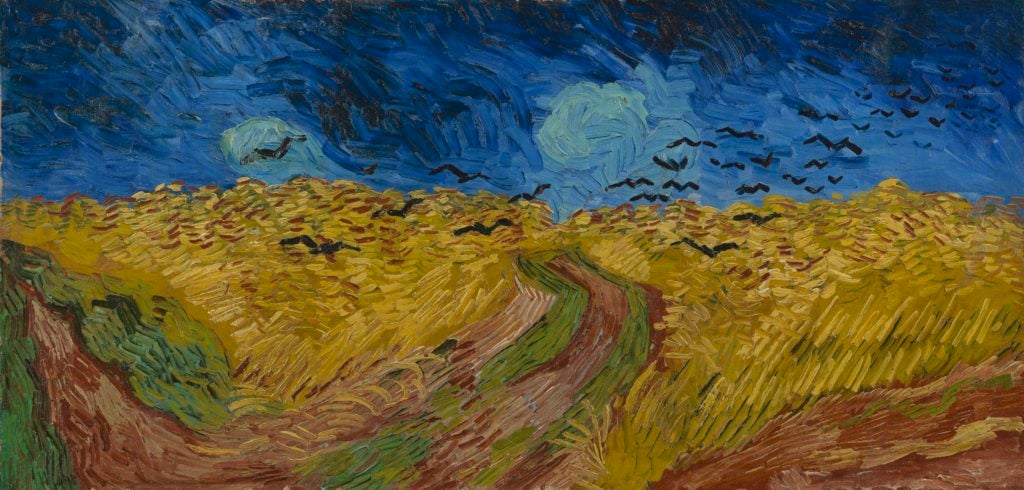
Check out part two of our series on famous artists' last works.

Caroline Goldstein &
Eileen Kinsella

Several months ago, we explored what artists’ final works say about their lives and careers. With the help of information gleaned from Bernard Chambaz’s book, The Last Painting, and our own research, we present the second of our two-part series—including a surprising new finding about the final work of Vincent Van Gogh…
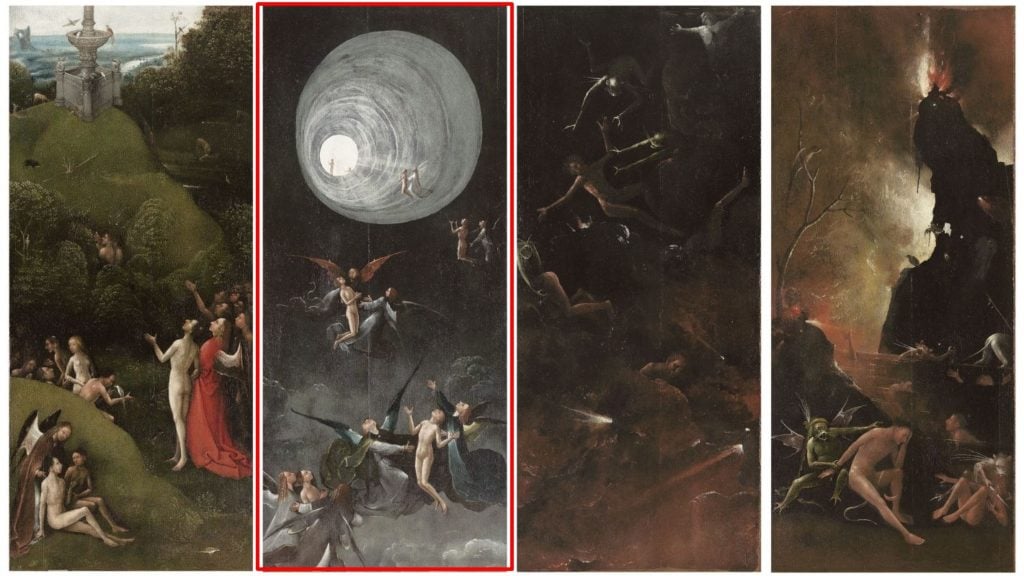
Hieronymus Bosch, The Flight from Heaven from Visions of the Afterlife (1490–1516). Courtesy of Google Arts & Culture.
Hieronymus Bosch is famed for imagining the hysterical agony and ecstasy of the next realm in his super-detailed paintings, many of which—including the Visions of the Afterlife—were used as doors for altarpieces. Based on the (admittedly, less-than-perfect) historical analysis of Bosch’s work, the panel depicting The Flight from Heaven was his final painting, an uncharacteristically dark palette perhaps foreshadowing his eventual descent into the rampages of a widespread cholera epidemic, to which he eventually succumbed in 1516.
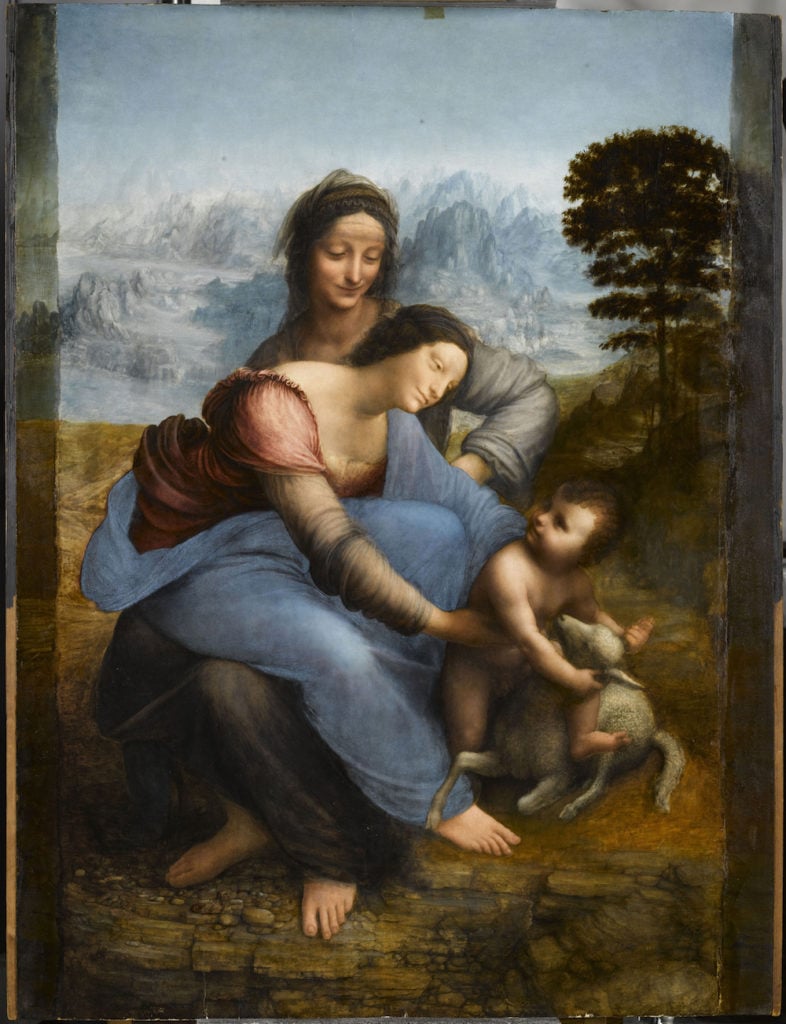
Leonardo da Vinci, The Virgin and Child with Saint Anne (1510). Courtesy musée du Louvre © RMN/ René Gabriel Ojéda.
According to the Louvre, which is including this work in its upcoming Leonardo blockbuster exhibition, the painting is thought to have been commissioned by Louis XII of France to celebrate the birth of his only daughter, Claude, in 1499. Anne was the name of his wife and also of the patron saint of infertile and pregnant women. But the picture was never delivered to Louis XII, who died in 1515. In all likelihood Francis I, Louis XII’s successor as the King of France, acquired it from Leonardo’s assistant, Salai, for a considerable sum.
In September 1669, a minor painter visited Rembrandt and noted that this work was (in the painter’s opinion) unfinished. “Here everything is both pared down and opened up at the same time,” Chambaz writes. “This is the standard Simeon… an old man, eyes closed, as if his eyesight is weakening and the sense of touch has become predominant.” The painting remained unfinished after Rembrandt’s death. But a student and follower, Van den Eckhout, is believed to have later worked on the face of the mother figure.
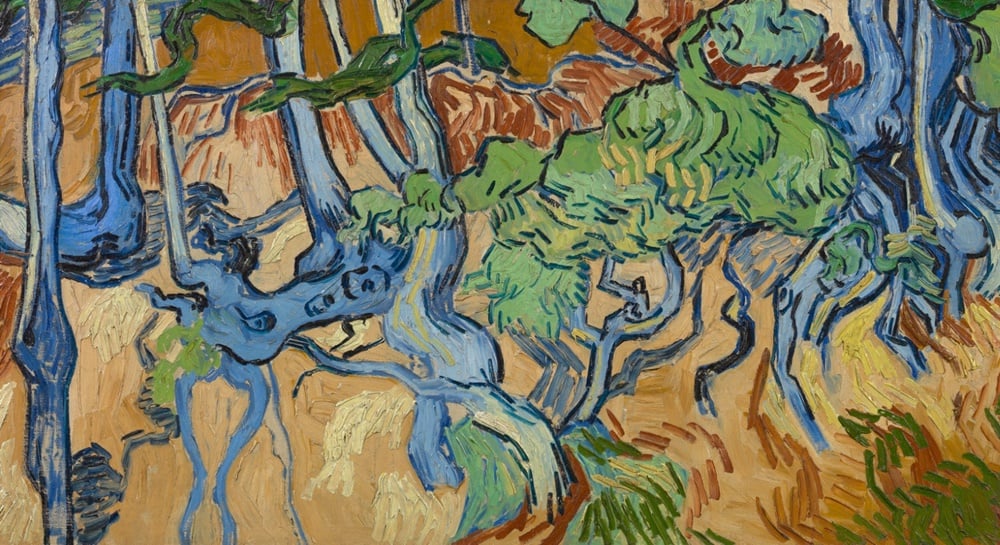
Vincent Van Gogh, Tree Roots (1890). Image courtesy of the Van Gogh Museum, Amsterdam and the Vincent Van Gogh Foundation.
For years, Wheatfield with Crows has been considered Van Gogh’s final painting, but Chambaz notes that this may not actually be accurate—a claim backed up by the Van Gogh Museum in Amsterdam. A representative for the institution flagged the above picture, Tree Roots, instead, and said it is “probably” his last painting. According to a 2012 essay penned by Van Gogh experts Bert Maes and Louis van Tilborgh, this work “was previously roughly allocated to July 1890, but it turns out that it was one of Van Gogh’s last paintings, if not the very last one.”
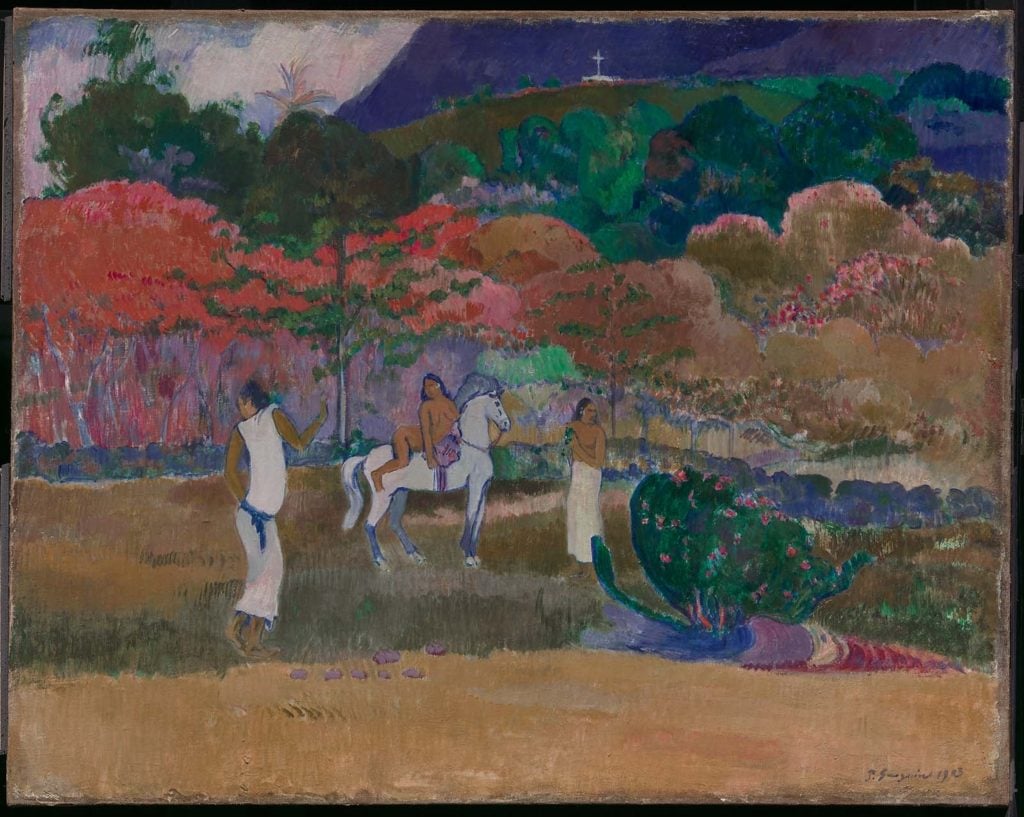
Paul Gauguin, Women with White Horse (1903). Courtesy of the Museum of Fine Arts Boston.
As Chambaz deftly illustrates, Gauguin couldn’t have known just how prescient his final painting really was. The work, which depicts women in a field below a bright blue sky, has, in its background, a white cross under which the artist was buried the very year the painting was made, 1903.
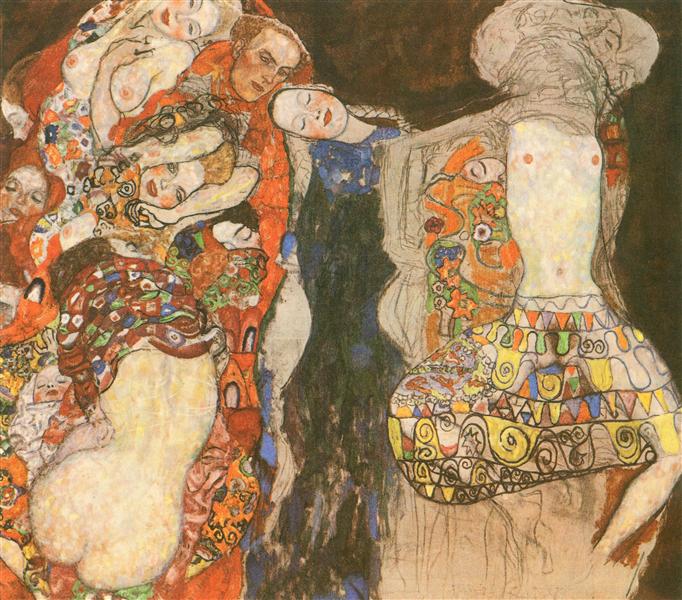
Gustav Klimt, The Bride (1918). Courtesy of Google Arts & Culture.
The Bride was one of several paintings left behind in Klimt’s studio in Vienna following his death in early 1918. The right half is dominated by a semi-nude female figure, though the artist’s efforts at painting an ornamental clothing pattern over her body are clearly visible. Art historian Alessandra Comini described it as such: “The knees were bent and the legs splayed out to expose a carefully detailed pubic area on which the artist had leisurely begun to paint an overlay ‘dress’ of suggestive and symbolic ornamental shapes.” In a Telegraph column, Martin Gayford wrote: “Thus Klimt’s own death revealed the sexual obsession that lay beneath his shimmering surfaces.”
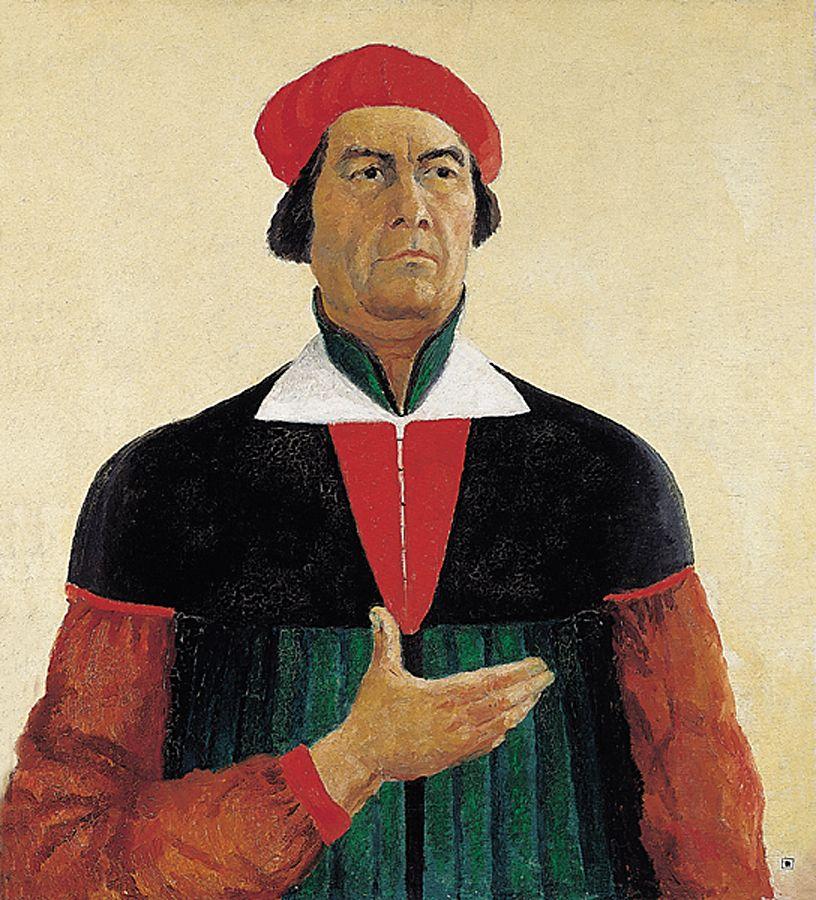
Kazimir Malevich, Self-portrait (1933). Courtesy of Google Arts & Culture.
Malevich’s final work, this 1933 self-portrait, was painted two years before the artist’s death from cancer at the age of 57. As he lay dying, he wrote: “I am excluded from life… I find myself in a different world, a world full of sadness and sorrow.” According to Chambaz: “He doesn’t paint anymore but he lives surrounded by his paintings or, more exactly, he lies beneath them. His sickbed is placed against the wall where, packed like sardines, a dozen of his brightly colored geometric paintings hang resplendent.”
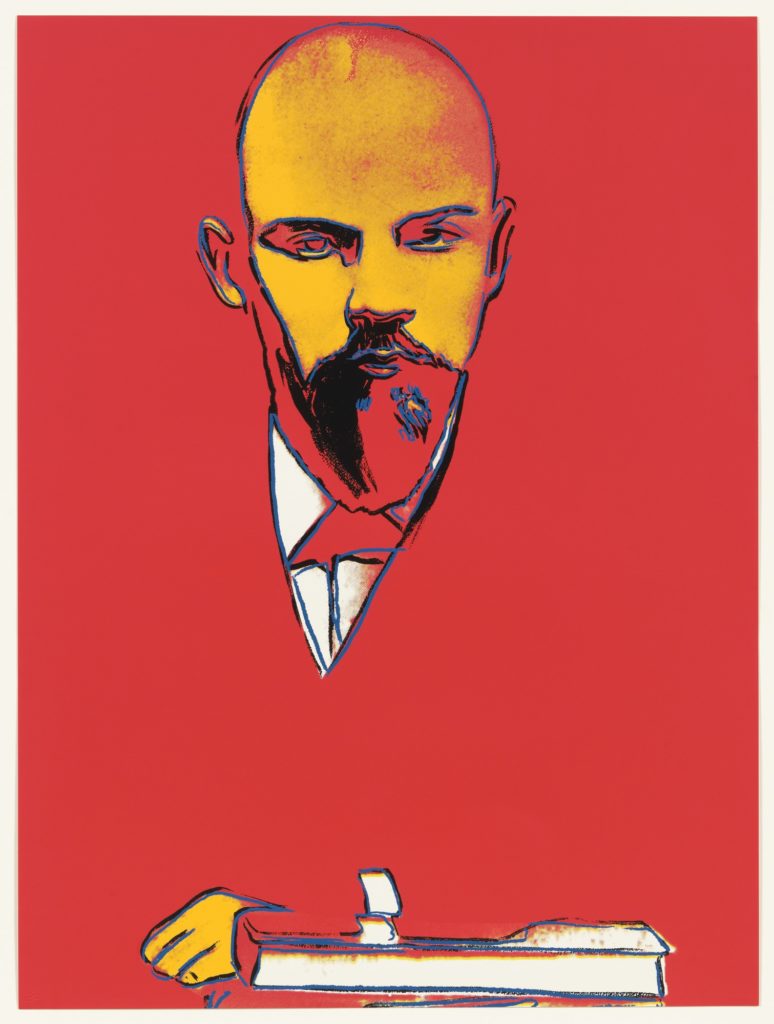
Red Lenin (1987). Courtesy of the Museum of Modern Art.
It may be a somewhat surprising subject for the Pop artist best known for splashy images of Marilyn Monroe, Campbell’s soup cans, Elvis, and Coke bottles. But when Warhol visited his friend Bernd Klûser in Munich and received a torn photographic print of a still-young Lenin, 20 years before the Revolution, inspiration struck. Warhol died in February of 1987, after complications from gall bladder surgery.
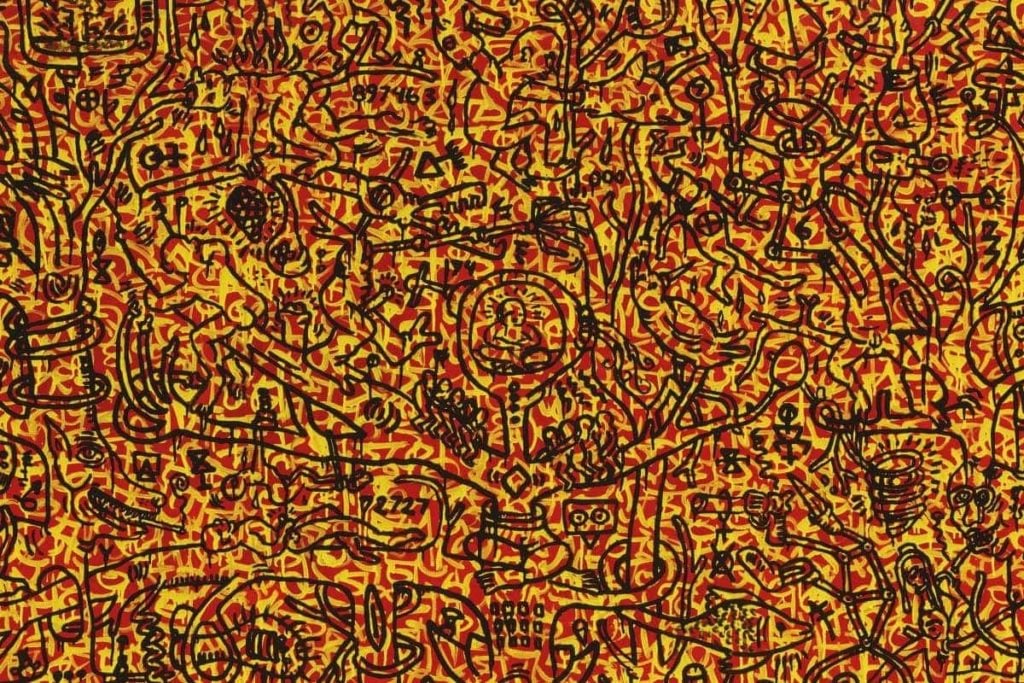
Keith Haring, The Last Rainforest (1989). Courtesy of Sotheby’s & Phaidon.
In 1988, at just 30 years old, Keith Haring was diagnosed with AIDS—at that time, a veritable death sentence. He knew that the end was near, and in the last year of his life he established a foundation in his name to fund AIDS organizations and to license his artwork to support the cause. In a catalogue essay accompanying the sale of this painting in 2016 (which was then in the collection of photographer David LaChapelle), we learn that following his diagnosis, Haring embarked on a monumental task to complete 100 canvases before his death. In the end, he only finished three before he died in February 1989.
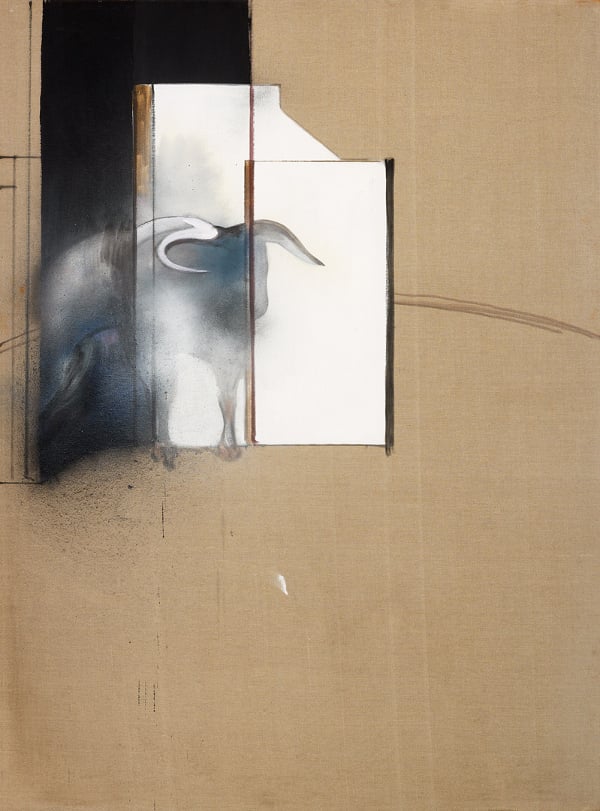
Francis Bacon, Study of Bull (1991). Courtesy of Guggenheim Museum Bilbao.
Francis Bacon knew he was on his last legs and late in life, he became increasingly obsessed with visiting the Prado Museum in Madrid, spending hours alone in the company of Velazquez and Goya’s most luminous works, and continuing a years-long interest in bullfighting. In a stark divergence from his earlier bull paintings, though, here there is no human counterpoint to the animal, no colors apart from the earthy tones and the spectral white shadow from which the bull is entering.